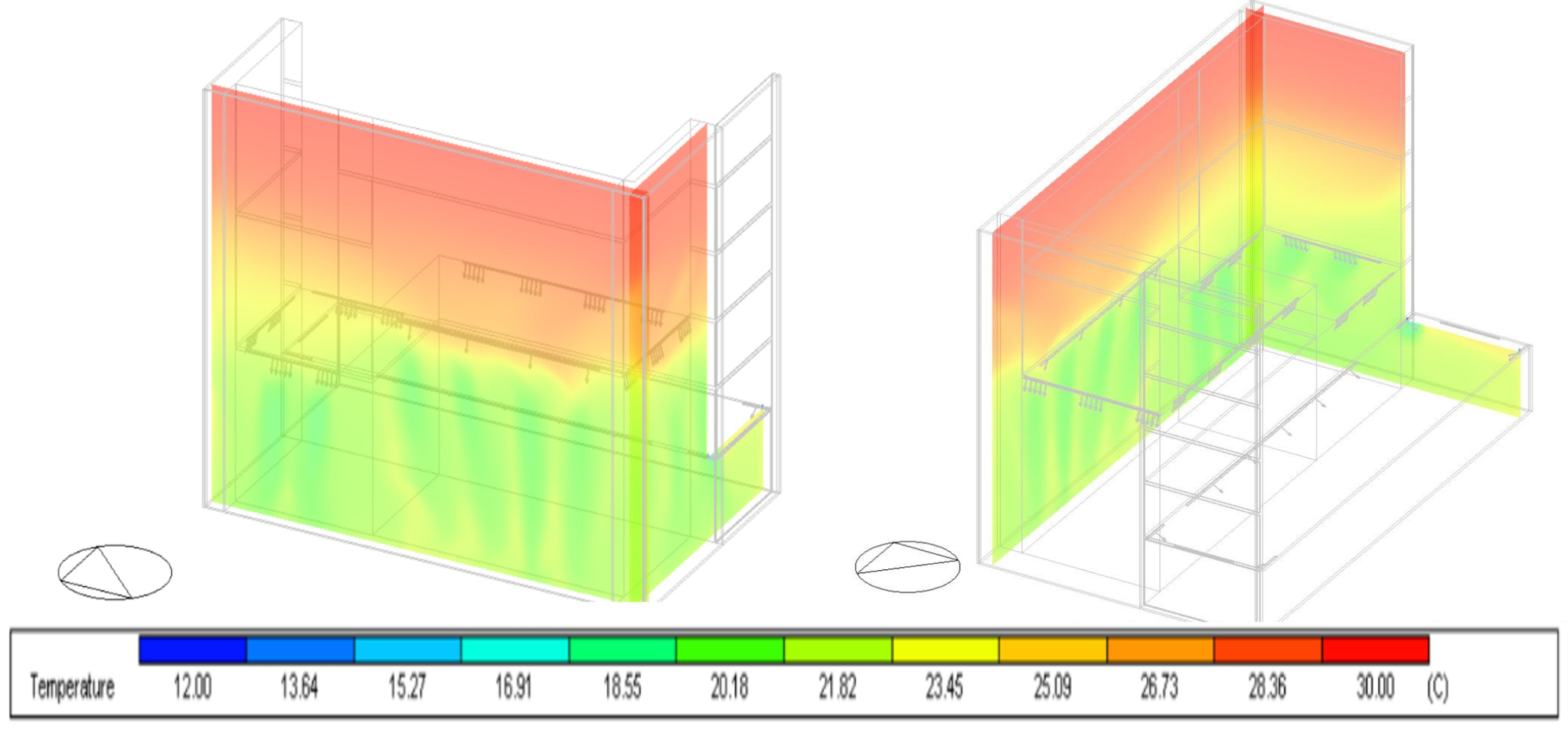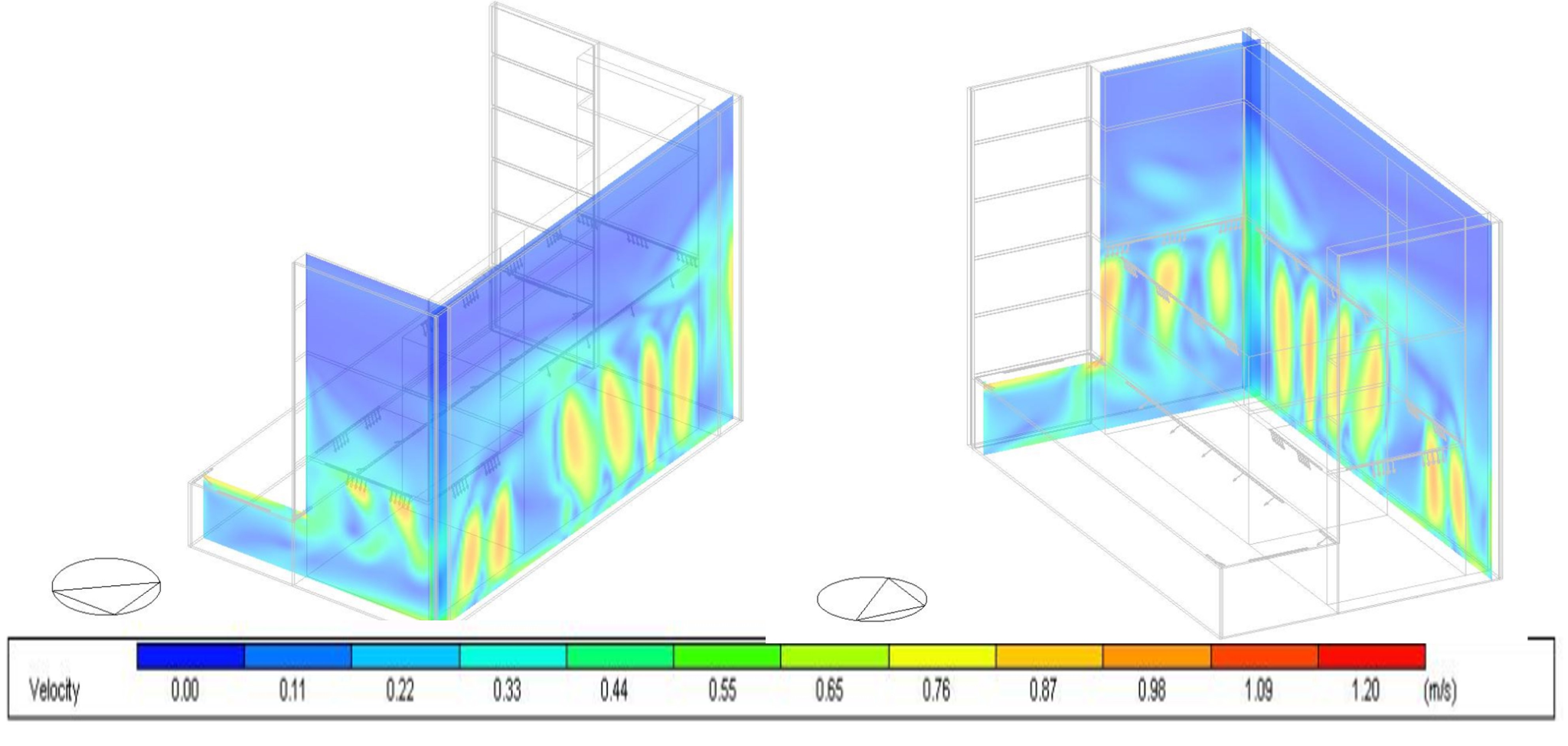Computational Fluid Dynamics (CFD) analysis plays a crucial role in designing and optimizing air conditioning systems. CFD allows engineers to simulate the flow of air and heat transfer within a space or through components of the HVAC (Heating, Ventilation, and Air Conditioning) system. Here are some key aspects of CFD analysis in air conditioning.
- Air flow patterns: CFD can be used to analyse the airflow patterns within a room or a building. This includes understanding how air moves through different spaces and identifying areas of stagnation or poor air circulation.
- Temperature distribution: CFD simulations help in predicting temperature distributions within a space. This is essential for ensuring that the HVAC system maintains a comfortable and uniform temperature throughout the area.
- Heat transfer: CFD allows engineers to study heat transfer mechanisms within the HVAC system. This includes heat exchange in components like coils, heat exchangers, and ductwork. Optimizing heat transfer is critical for improving the efficiency of the system.
- Ventilation design: CFD can assist in designing effective ventilation systems. It helps in determining the best locations for air intakes and outlets to ensure proper ventilation and air quality.
- System efficiency: CFD analysis helps in evaluating the overall efficiency of the air conditioning system. By identifying areas of inefficiency or high resistance to airflow, engineers can make design modifications to enhance system performance.
- Thermal comfort: CFD can be used to assess thermal comfort parameters such as air velocity, temperature, and humidity distribution. This information is valuable in ensuring that the HVAC system meets the desired comfort levels for occupants.
- Equipment design: CFD is useful in optimizing the design of HVAC components such as fans, filters, and heat exchangers. It allows engineers to study the impact of different design parameters on system performance.
Overall, CFD analysis is a powerful tool in the design and optimization of air conditioning systems, enabling engineers to create more efficient, reliable, and comfortable HVAC solutions



